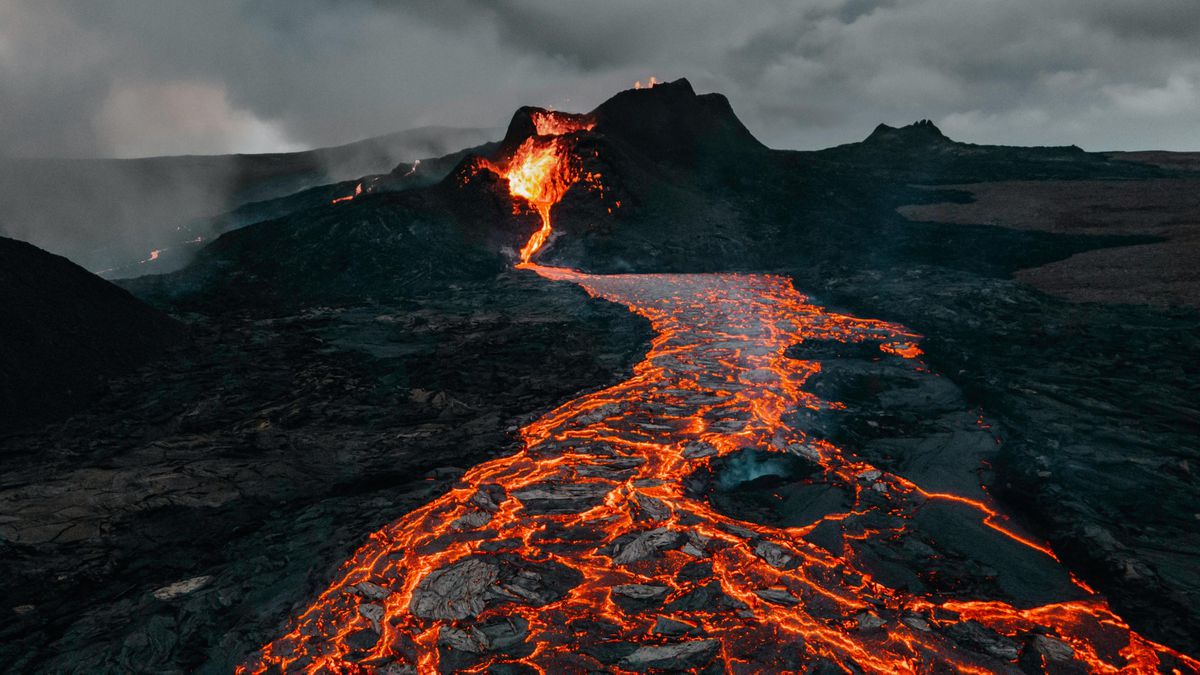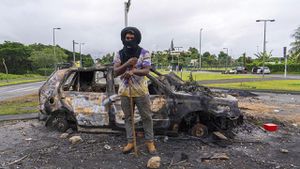The dynamic East African Rift System (EARS) stands as one of nature’s most intriguing marvels, where the Earth's lithosphere is actively breaking apart. This geologically active zone, stretching approximately 6,000 kilometers from the Red Sea in the north to Mozambique in the south, is a testament to the natural forces shaping our planet. Researchers are keenly studying this region not just for academic curiosity but for the tangible impact it has on the millions living within its vicinity. Understanding EARS is crucial for hazard assessment and mitigation in the face of potential volcanic activities that could disrupt human life and infrastructure.
To give you a perspective, imagine a landscape gradually, but relentlessly, being torn apart. The EARS provides a striking real-world example of continental rifting, a process that could someday lead to the creation of a new ocean basin. This region of tectonic movements and volcanic activities has fascinated scientists for years. The rift's evolution, marked by magma movements and volcanic eruptions, offers a live laboratory to study early-stage continental break-up, with its implications reaching far beyond geological curiosity.
The significance of the EARS lies in its unique geological settings. It’s not just a rift but a complex interplay of tectonic, magmatic, and volcanic actions that define its character. The rift houses a diversity of volcanic structures and styles, from lava lakes to silicic domes, which are critical in understanding the broader mechanisms of Earth's magmatic processes. However, despite the inherent risks posed by such activities, hazard assessment and institutional capacities in sub-Saharan Africa remain underdeveloped.
Before diving into the nitty-gritty of the EARS, it’s essential to understand some key terms. Magmatism, for example, refers to the movement and crystallization of magma within the Earth's crust, a phenomenon that significantly influences the rift. Similarly, tectonics is the study of Earth's structural features, particularly the movements leading to phenomena like earthquakes and continental drifts. The EARS, characterized by active tectonics and magmatism, provides an excellent case study for these geological processes.
Historically, volcanic studies have focused more on subduction zones, where tectonic plates converge, resulting in dramatic volcanic activities. Only about 10% of the world's volcanoes are found in continental rifts like the EARS, which explains the relative lack of data and understanding compared to subduction zones. Yet, the last two decades have seen a burst of interest and discovery in EARS, driven by a series of multidisciplinary studies that have unearthed new insights into its volcanic history and current activities.
Volcanic activity within the EARS can vary dramatically, from explosive eruptions to the slow effusive flow of lava. The tectonic setting plays a crucial role in this variance, as it determines how magma is generated and rises to the surface. Unlike the predictable, albeit dangerous, activities of subduction zone volcanoes, rift volcanoes present a broader range of activities, making them more challenging to study and predict.
One of the highlights of EARS research has been the technological advancements aiding in the study of these volcanic activities. Remote sensing, particularly satellite-based monitoring, has revolutionized our understanding by providing detailed spatial and temporal data on volcanic deformation and activity. For instance, satellite observations revealed that 17 EARS volcanoes underwent periods of deformation between 2003 and 2008, challenging previous beliefs about their dormancy.
Researchers employ a variety of methods to study EARS, each contributing unique insights into its complex magmatic and tectonic processes. Ground-based measurements, such as seismic monitoring, complement remote sensing techniques to provide a comprehensive picture. Seismic monitoring, for example, can detect the subtle movements of magma beneath the surface, indicating potential eruptions. In the Aluto volcano of the Main Ethiopian Rift, seismic data has been pivotal in understanding the interaction between deep magmatic sources and shallow hydrothermal systems.
Geophysical techniques like magnetotellurics and gravity studies offer another dimension of understanding. These methods help image magma storage areas and understand the crust's behavior under the stress of magmatic intrusion. The integration of these various techniques is essential, particularly given the complex nature of rift systems, where magmatic activities can occur over a range of depths and timescales.
In terms of data collection and analysis, one challenge is the sheer size and diversity of the EARS. Researchers often conduct spot measurements over strategic areas and extrapolate the findings to larger, unmeasured regions. For example, estimates of CO2 flux from the eastern branch of EARS vary widely due to the different tectonic settings where initial measurements were made. These estimates range from 4 to 71 million tonnes of CO2 per year, underscoring the challenges in quantifying emissions accurately.
So, what have these methods uncovered about the EARS? One significant finding is the variation in volcanic activity along different segments of the rift. In Northern Tanzania's Natron basin, for example, magma bodies ascend along border faults, focusing fluid release in these areas. This contrasts with the older Magadi basin in Southern Kenya, where fluid release is more concentrated along intrarift faults in the basin center. This shift in tectonic and magmatic activities as the rift evolves over time is crucial for understanding the overall weakening of the crust, a process that may eventually lead to new sea-floor spreading.
The fluid flow within the EARS is also of great interest, particularly how it influences volcanic activities. Fault systems control the transport of lithosphere- and mantle-derived volatiles, allowing them to reach the surface. For instance, gases discharged via springs or volcanoes can reveal much about the underlying magmatic processes. Studies of helium and carbon isotope systematics in regions like the Rungwe Volcanic Province in southern Tanzania highlight the significant mantle-derived components contributing to the volatile discharges throughout the rift.
Understanding these processes is not just an academic pursuit—it's critical for hazard management. The densely populated areas within the rift are at continuous risk from potential volcanic activities. Probabilistic volcanic hazard assessments, which use statistical tools to estimate eruption probabilities and impact areas, are vital. Such assessments have been applied in regions like Aluto in Ethiopia, where the diverse dataset provides a framework for understanding the potential hazards and planning mitigation strategies.
However, several challenges remain in managing these hazards effectively. Data scarcity is a significant hurdle, particularly in creating detailed hazard models. Additionally, the lack of historical disasters has resulted in low political awareness and investment in volcanic monitoring infrastructure. This discrepancy highlights the need for long-term investment in local capacity building and the development of monitoring facilities that can provide real-time data crucial for early warning systems.
The implications of these findings extend beyond immediate hazard management. They provide insights into the broader geological processes that have shaped our planet and continue to do so. For instance, understanding the magmatic processes in EARS can inform us about the early stages of continental breakup and the eventual formation of new ocean basins. Additionally, the interaction between tectonic and magmatic processes in the EARS offers clues about similar activities in other rift systems worldwide.
The study of EARS thus bridges the gap between theoretical geology and practical applications in hazard management. It's a field where the stakes are high, not just for scientific knowledge but for the millions of lives potentially affected by volcanic activities. The dynamic nature of EARS ensures that this region will continue to be a focal point for geologists and volcanologists in the years to come.
Much remains to be explored, particularly in integrating the geological, geophysical, and geochemical data to create comprehensive models of rift dynamics. Future research directions could include more detailed studies of the crust-mantle interactions, the role of climate in volcanic activities, and the impact of human activities on rift dynamics. Technological advancements, particularly in remote sensing and real-time monitoring, promise to revolutionize our understanding of EARS further.
In conclusion, the East African Rift System offers a unique window into the complex processes of continental rifting. By combining various scientific techniques and perspectives, researchers are unraveling the mysteries of this geologically active region. Their findings not only enhance our understanding of Earth's dynamic processes but also underscore the importance of preparedness and hazard management in mitigating the risks associated with volcanic activities.
"Understanding the complex interplay of tectonic, magmatic, and volcanic activities in the East African Rift System is not just about academic curiosity. It's about preparing for and mitigating the impacts of these natural processes on the millions of people living in its shadow," emphasizes one of the authors.




